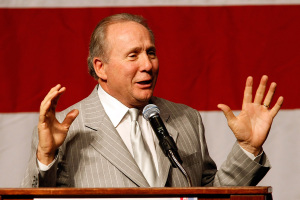Americans abandoning faith linked to drop in charitable giving, analysis finds

Americans are giving less to charitable organizations and declining religious affiliation is contributing to the decrease, according to a new analysis of philanthropic trends.
The "Changes to the Giving Landscape" report released this month by the Lilly Family School of Philanthropy and Vanguard Charitable shows that the number of adults who gave to charity dropped from 66 percent in 2000 to 53 percent in 2016.
The 66 percent figure held steady until the Great Recession — which spanned from December 2007 to June 2009 — after which it decreased sharply in 2010.
Researchers noted that the steep drop amounts to approximately 20 million fewer households giving to charity.
"The analysis drew on data from the Philanthropy Panel Study, a data set within the University of Michigan’s Panel Study of Income Dynamics, which tracks the same 9,000 families’ charitable giving every two years," Market Watch reported Tuesday.
The report's co-author, Una Osili, who is associate dean for research and international programs at the Lilly School, noted that the decline in religious practice in the U.S. has contributed to the decline in giving.
“Attending services is correlated with giving to religious organizations, but it’s also correlated with giving to secular groups,” Osili said.
Giving to charitable organizations is an encouraged practice within many religions, often bolstered by doctrines and long traditions.
Yet with recent documented decline in number of people who self-identify as Christian alongside the 9 percent increase in number of agnostics, atheists, and "nones" — those who no longer identify with any particular religious affiliation — charitable giving has also dropped.
In 2018, religious groups received 29 percent of total giving, the first year giving fell below 30 percent of overall giving, according to the Giving USA annual report on philanthropy, which is now in its 64th year.
Further contributing to the decline in giving to churches among religious Americans are scandals that have been exposed in recent years.
Nearly half of Catholic respondents in a 2018 survey indicated they were donating less to their individual parishes in light of media reports exposing clergy sexual abuse.
The millennial generation, who came of age at the start of the Great Recession, is also giving less of their income to charity, the analysis showed, in large part due to the economic downturn.
Millennials “had the misfortune of entering the workforce during the worst economic downturn since the Great Depression,” the report said.
Whereas previous generations increased their giving as they entered the workforce, millennials have not yet followed that pattern.
The Lilly School report also found that Americans in the lower socio-economic strata — households led by people with less than a high school education and less than $50,000 in income or less than $50,000 in total assets — gave notably less to charity following the recession.
This is due to the uneven economic recovery in the years after the recession, the authors of the report said.
“This shift is due to lower-income and lower-wealth Americans experiencing the slowest economic recovery since the Great Recession, during years when the cost of other items such as food, education and healthcare have increased,” Jane Greenfield, president of Vanguard Charitable, said.
“This has led to a decrease in the share of income available to give to charity.”



























